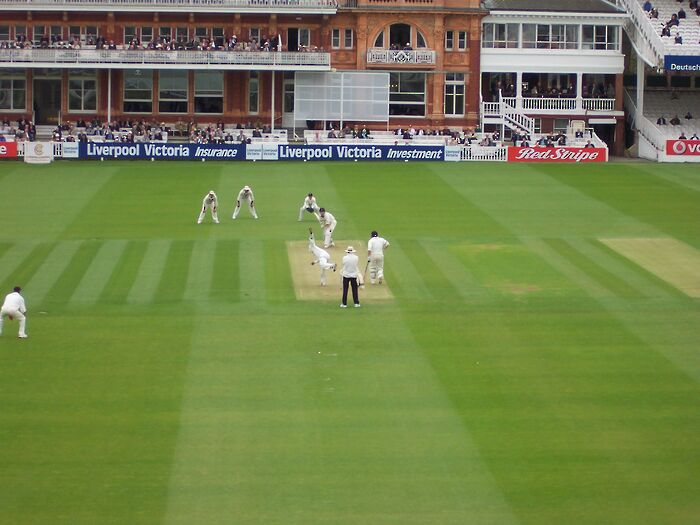The Hundred: A death knell for traditional cricket?
Outs or no outs, Joseph Hill argues that The Hundred remains a warning sign for the commercialisation of sport

Every summer, the back pages of newspapers are emblazoned with photos of lonely spectators at County Championship grounds around the country, usually lamenting the death of traditional cricket in its longer format. To combat flagging attendances, in 2003 the England and Wales Cricket Board (ECB) launched Twenty20 cricket. The game, consisting of twenty overs a side and lasting 2-3 hours rather than four days, was initially very successful. However, the ‘T20 Blast’ in England has failed to keep up with similar competitions across the globe such as the Indian Premier League (IPL), averaging 7,500 attendees in 2017 compared to the Indian version at 25,000, while the international pull is far smaller in terms of TV viewing figures, with the IPL regularly topping 30 million watchers.
The Hundred is the ECB’s latest attempt to boost the marketability of cricket as a sport. Involving 100 balls, split up into ten ‘overs’ of ten balls apiece, it is aimed at attracting new fans to a domestic game that struggles to expand its reach beyond a hardened core of cricketing fanatics. The 18 counties have been replaced by 8 teams based in cities, with two in London at Lords and the Oval, in an American-style ‘franchise’ system. Similarly, players were allocated in a draft, akin to those employed in the NBA and NFL, an opulent affair broadcast live on Sky Sports. Teams were allowed to pick one player with an England central contract, three overseas players, two ‘local icons’ and the remainder from the existing counties.
“While the injection of cash into domestic cricket has its benefits, the manufactured nature of this competition contributes to an almost artificial feel”
What confused me most about the draft is that, for all the ECB’s clamouring about attracting top talent and expanding the game both in the UK and abroad, the actual picks did not reflect this at all. Global superstars like Chris Gayle and Lasith Malinga were omitted in favour of the likes of D’arcy Short and Nathan Coulter-Nile, both of whom are good players but with very little X-factor about them. Equally, players such as Megan Schutt and Shabnim Ismail are absent from the female competition, both players who are considered amongst the world’s best. Most of the rosters are made up of county players who, while obviously very good at cricket, are not big enough names to attract the kind of exposure that the ECB wants. It is difficult to see a reality where new fans are enticed by the likes of Ed Barnard and Henry Brookes at the expense of notable absences such as India captain Virat Kohli and Australian villain Steve Smith, both of whom are ranked in the top 5 batsmen worldwide.
The format of the Hundred is clearly a radical departure from the traditional game of cricket. Ten ball overs, a ‘countdown’ from ball 100 to the last ball and strategic timeouts interspersed throughout. It could have been much worse, had the much maligned proposal to change the lexicon of the game to alter ‘wickets’ to ‘outs’ been approved. When the Telegraph broke the story, cricketing puritans across the country went up in arms about the ludicrous nature of the mooted change. This PR mishap is in accordance with the feeling that those spearheading the marketing are detached from cricket as a sport, and see it more as a business venture. Sky are paying £36 million for the broadcasting rights, coupled with huge sponsorship money from the likes of Cazoo (who sponsor Premier League football sides Aston Villa and Everton as well).
“The Hundred has made commendable steps towards advancing gender equality in cricket, with each fixture containing a double-header of the women’s and men’s games back-to-back”
While the injection of cash into domestic cricket has its benefits, the manufactured nature of this competition contributes to an almost artificial feel. The ‘local icons’ are a brief nod to the county-based nostalgia felt by many in this country, but lots of players belong to teams far away from their original counties. Ben Foakes, the Surrey stalwart, will be plying his trade in Leeds this summer for example. Each team plays an additional game against their closest regional rivals, but the brand-new teams and ‘franchised’ cities removes the organicism of rivalries and produces a kind of sterile, forced competition. The rivalries include the Southern Brave (based in Southampton) versus the Welsh Fire (Cardiff), located around 150 miles from each other, which seems to be just an attempt to manufacture rivalries for the sake of doing so. The eventual result is a competition that feels almost more like a reality TV show than a display of sporting excellence, with every detail planned meticulously to ensure a spectacle that will draw in new attention.
With all the focus on the negative impacts of The Hundred on traditional English cricket, it is easy to ignore the positive side of the competition. An argument often levelled at critics of the tournament is that cricket needs to modernise to survive, and that the longer format is easily digestible to a nucleus of older, predominantly male fans. Shorter formats, coupled with engaging and easily accessible rules may allow for broadened interaction with cricket in England. The Hundred has made commendable steps towards advancing gender equality in cricket, with each fixture containing a double-header of the women’s and men’s games back-to-back. Furthermore, the announcement of an equal prize pot in both competitions is an extremely promising sign for the future of women’s cricket, at grassroots and professional levels. The increased visibility provided by the double-header format is reinforced by Sky’s commitment to streaming the women’s games on YouTube, allowing for a broadened outreach. It is unclear though why the current T20 format could not have been reformed to level the playing field between men and women, rather than inventing an entirely new form of cricket.
The Hundred faces an uphill struggle in winning over traditional cricket fans, and presents a new challenge to upholding the history of four-day cricket in this country.
 News / CUP announces funding scheme for under-represented academics19 December 2025
News / CUP announces funding scheme for under-represented academics19 December 2025 News / Cambridge welcomes UK rejoining the Erasmus scheme20 December 2025
News / Cambridge welcomes UK rejoining the Erasmus scheme20 December 2025 News / SU reluctantly registers controversial women’s soc18 December 2025
News / SU reluctantly registers controversial women’s soc18 December 2025 Film & TV / Timothée Chalamet and the era-fication of film marketing21 December 2025
Film & TV / Timothée Chalamet and the era-fication of film marketing21 December 2025 News / News in Brief: humanoid chatbots, holiday specials, and harmonious scholarships21 December 2025
News / News in Brief: humanoid chatbots, holiday specials, and harmonious scholarships21 December 2025










